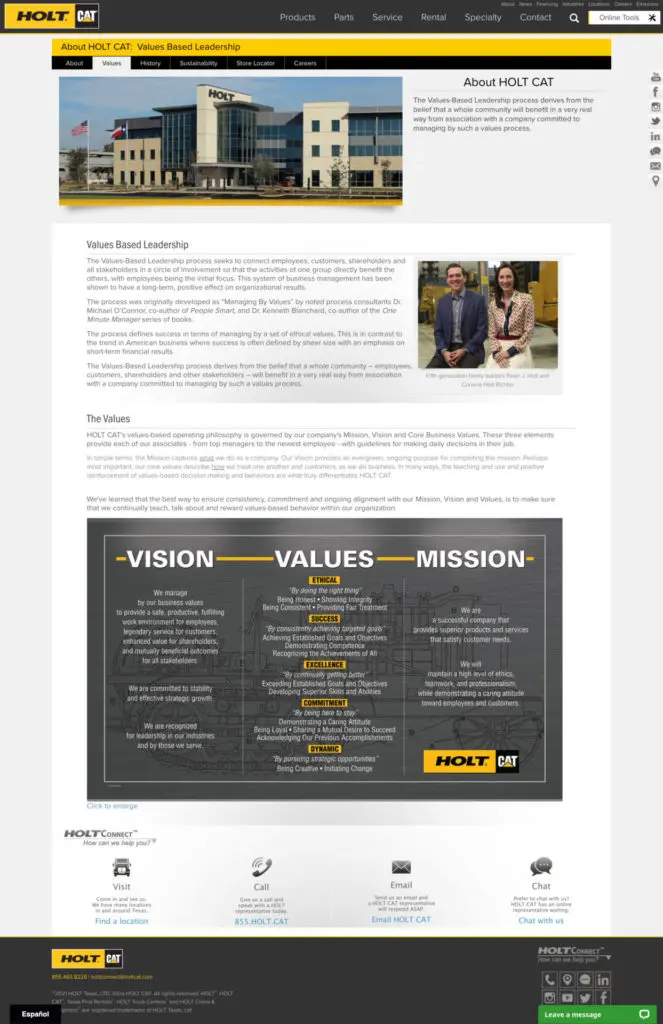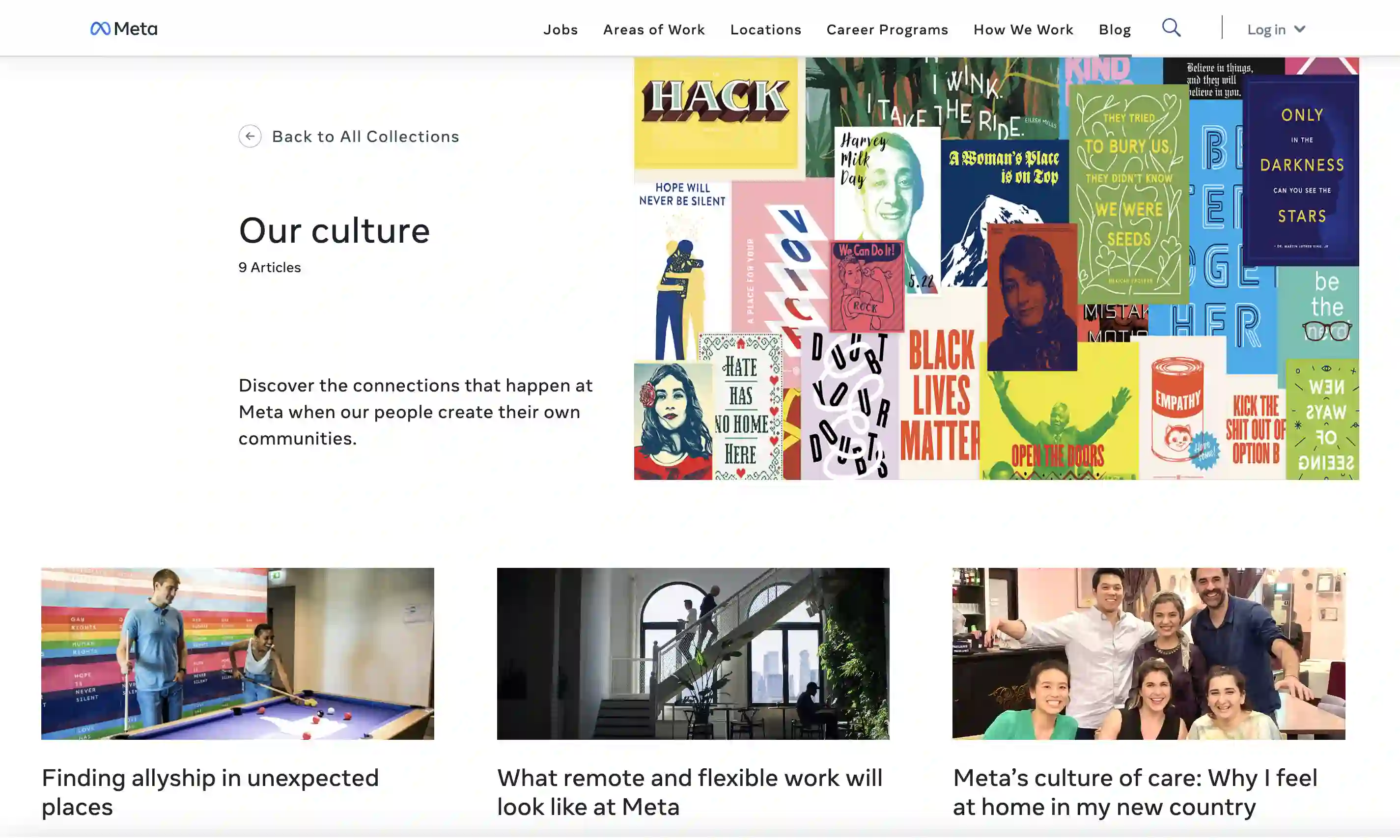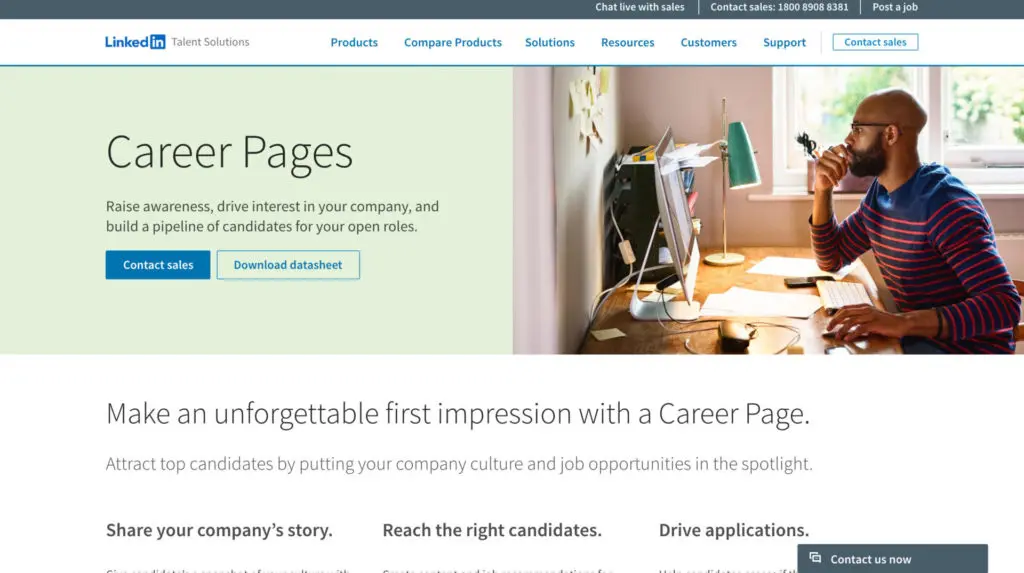Online recruitment has exploded in recent years. One of the most well-known digital job boards, Indeed, receives over 250 million unique visitors every month, while the 2019 recruiting report by Jobvite showed that a whopping 84.31% of all job applications happen online either via job boards or career sites. These figures make the days of circling interesting job ads in newspapers feel like light-years ago.
However, recruiting online isn’t a walk in the park. Getting online recruitment right is an art when everyone is competing to find great candidates in such a saturated space—the right candidates are out there, but recruiters often feel like they can’t reach them, instead ending up with candidates who don’t always hit the mark.
Too frequently, online recruiting can be a static exercise of posting a few job ads and crossing your fingers, when it should really be a measured and proactive strategy combining multiple methods that help you pinpoint high-caliber candidates. When it’s done right, online recruitment contributes to the longevity and success of your business by avoiding bad and costly hires and builds a company full of high-quality employees.
This article is for recruiters who want to take their online recruiting strategy a step further: not only to attract quality candidates but also hire candidates who are truly the right fit for each position. We’ll go through three methods you can use to finetune your online recruiting: building and leveraging your employer brand, using screening tests, and humanizing the hiring process.
Table of contents
- Online Recruitment Method #1: Create a strong employer brand to attract the right candidates
- Online Recruitment Method #2: Use screening tests to qualify strong candidates
- Online Recruitment Method #3: Humanize your hiring process to better connect with candidates
- Online recruitment helps you hire better candidates faster
Online Recruitment Method #1: Create a strong employer brand to attract the right candidates
An employer brand is more than just your company’s reputation. It’s an encapsulation of how your company is perceived in terms of its culture, identity, and overall mission. More than that, your employer brand is the sum of everything that differentiates your company and signals to potential employees why they should choose to work for you over another company.
Your employer brand is available for everyone to see and is made up of many moving parts. Whether candidates view your company’s career page, social media profiles, or even Glassdoor reviews, you need to take charge of how your employer branding appears in the outside world.
The more you’re able to market your company as a unique and reputable organization to work for, the more you encourage suitable job seekers to apply. By default, this also means you can avoid receiving applications from job seekers that may not be the best fit for your company.
Here are a couple of ways you can bolster your employer brand:
Create a hub of information on your website
Did you know that 75% of job seekers consider an employer’s brand before even applying for a job? Designating a page or hub on your company website — usually your careers page — is an easy place to establish your employer branding, because a candidate is unlikely to be ready to apply for a role without first checking out your website.
The following employer branding information should be readily available on your hub:
Company culture
Your company culture is what makes your company shine — but not everyone’s going to like it. Maybe you encourage a casual dress code, enjoy Friday beers with the team, or are committed to being a pet-friendly office (not everyone likes dogs in the office: shocker, we know). You need to be upfront about what kind of culture you operate in, or you risk wasting valuable time talking to unsuitable candidates.
Company vision, values, and mission
Clarify what your organizational vision, values, and mission look like. Mission statements provide context around why the organization exists and its purpose, vision statements clarify what problems the company seeks to address, while values statements define the core values and principles that drive the organization.
Candidates are far more likely to apply and be successful employees in the long-run if their personal values match that of the employer, and if they’re clear on the organization’s purpose.
HOLT CAT hits the mark with their clear yet bold vision, values, and mission.
Employee testimonials
Employee testimonials are a great way to spotlight exactly what your employees get out of working for your organization, whether that’s development opportunities, company perks, or the impacts they make as a part of your company. Candidates want to hear what it’s really like working for you, not just what you tell them.
Facebook’s employee testimonials clearly demonstrate the value that employees get from the organization.
Employer branding gives job seekers reasons to want to be part of your organization besides “just a job.” The more background and context you can share about your organization, the more likely it is that you’ll attract the right candidates.
Promote your employer brand on social media
Companies no longer take to social media just to sell their products or answer customer service questions: social media makes up nearly half of the investment recruiters spend on growing their employer brands. With recruiting competition expected to rise on social media platforms, you shouldn’t only be using social media when it’s time to recruit for open roles. You should consider it part of your full-funnel online engagement and recruitment approach.
Organizations have learned to go where the people are, and because the majority of candidates these days are active on so many online platforms, taking time to invest in social media recruiting and promote your employer brand is invaluable to attracting the right candidates.
Here’s what you’ll need to keep in mind when building your employer branding into social media:
Consider each platform’s strength
What works for one platform won’t work for all of them. When looking to build your employer brand on social media, you’ll also need to consider your voice as an employer and how each platform can best serve it.
LinkedIn: Through your company’s LinkedIn page, you can create a LinkedIn Career Page that allows you to share employee testimonials, videos, photos, career opportunities, and more—in short, everything that makes up your employer brand can be built into one page.
Career Pages also give LinkedIn users personalized job recommendations and help them explore a wide range of your content so that they can assess your company before applying.
LinkedIn provides built-out career pages for each company. (Source)
Instagram: Instagram is a great tool for creating brand awareness. This platform allows you to be creative with your company style—share photos and videos of team celebrations, social events, corporate social responsibility activities, company retreats—but also helps you be highly targeted when recruiting online.
For example, if you’re holding a networking or recruiting event, targeted paid ads can help get your event information in front of the eyes of the right candidates. Target parameters include location, job title, and current/past employers, etc.
Example of a simple but effective job advertisement on Instagram (Source).
Twitter: Twitter’s conversational interface allows a company’s voice to really shine through. Companies can respond to world events, take a stand, and also share engaging, interactive content within the space of a few minutes or hours. This helps potential candidates see what issues are important to you as a brand, which is effective for helping create a brand image that’s approachable and accessible.
Example of a brand’s engaging tweet, which also demonstrates a commitment to charity/corporate social responsibility. (Source)
By building your employer brand into your company’s social media persona, you’ll generate more interest from talented candidates when you post about open roles, either because your audience is already engaged with your brand, or because you’ve set the scene for how candidates can expect to interact with you.
Online Recruitment Method #2: Use screening tests to qualify strong candidates
By nature, the expanse of the internet allows you to reach a higher volume of candidates than offline recruiting. This is true when you’re advertising for roles based in your actual geographical location, and especially when you’re seeking candidates for remote positions.
Interviewing every single applicant that arrives in your inbox is impossible, and too often, recruiters and hiring managers waste valuable time and money trying to assess and whittle down a large applicant pool.
Screening tests that help predict performance based on skills testing offer a way of controlling both the quantity and quality of candidates. Not only do TestGorilla’s screening tests automatically rank candidates according to their test scores, but unique algorithms help test the validity and reliability of the tests to help ensure results are accurate.
Test for relevant skills during online applications
Screening tests can help you identify which applicants are a good match for the role and for your company culture. If you’re used to receiving a full pool of applicants and don’t know where to start with screening, attaching a skills test to the application process can help you:
Quickly assess the candidates best matched to the role. At TestGorilla, we help you set up assessments that are relevant to each role. You can combine up to 5 ten-minute tests into one assessment to vet your candidates on skills, personality, and values to see if they are a good fit for the specific role and your company at large.
Avoid the dangers of CV screening—does this applicant possess the skills you need, or is this just a nicely written resume? Resumes can often be subjective, leaving the recruiter to fill in the gaps between what’s written and what’s actually relevant. Skills tests during the application stage help filter out applicants who don’t have the skills you need.
Vet applicant interest. Many job boards and career sites have a ‘click-to-apply’ functionality, and it’s not uncommon for job seekers to apply for many roles at once, including roles that they aren’t adequately qualified for. Attaching skills tests to application processes ensures that committed candidates will go through the test while those not serious will opt not to complete it.
Skills you can test for using online pre-employment tests
At TestGorilla, we have over 70 online tests for applicants and candidates for you to choose from. Here are just a few examples of our test categories that can help you evaluate and measure potential employees:
Language tests
If you’re hiring for roles that require a certain language level, testing candidates’ language skills before interviewing them is a great way of getting a feel for their capabilities—this way, you can quickly determine whether they could get through an entire interview in the required language before inviting them to one.
TestGorilla offers different levels of language proficiency tests (B1/C1) for English, Spanish, German, Mandarin, French, Portuguese, Italian, and Dutch, with a focus on grammar and vocabulary, forming sentences, and reading and listening comprehension.
Cognitive ability
If you’re filling roles that require a deep level of analytical and critical thinking, our cognitive ability tests help you identify those candidates. Included in this category are tests covering attention to detail, problem solving, critical thinking, numerical reasoning, and reading comprehension.
Programming skills
There are a range of TestGorilla tests that are suited to candidates who apply for any kind of developer role. For example, TestGorilla’s DevOps test helps you weed out candidates that are suitable for a role in a DevOps organizational culture, including how likely they are to be able to implement DevsOps practices. Other tests in programming include SQL (coding): complex queries, PHP (coding), and the CSS Developer Test, among many others you can find in our test library.
Personality and culture fit
Personality and culture fit tests reveal insights into candidates and how well-suited they might be for your workplace. For example, once a candidate completes the enneagram, 16 types, or DISC test, a results page displays a description of the candidate’s personality style, their approach to personal relationships, and their approach to working in a professional setting.
Situational judgment
Situational judgments tests measure how candidates and applicants respond to work-related challenges and situations. For those hiring for sales-focused roles, there’s a negotiation test, a business ethics and compliance test for managers, directors, and HR professionals, and a leadership and people management test for team leaders and general managers.
Companies are often hard-pressed for time when it comes to running skills assessments and analyzing the results every time there’s an open role to fill. Pre-testing is a quick and easy way to evaluate the skill sets of potential new hires and determine whether they’re the right fit for the role and your company.
Online Recruitment Method #3: Humanize your hiring process to better connect with candidates
Hiring processes are often pretty static—especially those that begin online—and don’t allow room for both the company and the applicant to get a feel for personality and culture until in-person interview stages. Hiring someone before you get to know them can often lead to poor hiring choices and high turnover.
When you make an effort to get to know candidates, you ultimately make better hiring decisions. Plus, making personal connections a priority also gives you an advantage over competitors: candidates are likely to choose the offer of the company they’ve felt more comfortable with or closer to during the recruitment process.
A great way to start is by including custom text or video-based questions to pre-employment assessments to understand candidates’ personality and motivations for applying to your role before dedicating time to interviewing them.
Include real-time video interviews in your hiring process
Real-time video interviews are a low-effort method for employers and candidates to interact on a more personal level, and inviting shortlisted candidates to attend these interviews as part of the application process is becoming increasingly common. This method cuts down on scheduling and interviewing costs, and frees up valuable time for recruiters and hiring managers.
Seeing and hearing candidates via video also provides you with a much better sense of the candidate’s experience and personality, and allows you to gauge their interest and engagement better than a resume or application form. It’s also a great way for both sides to ask further questions and clarify points about the job, values, expectations, and culture.
Here are a few tips for conducting real-time video interviews to help humanize the hiring process:
Use structured interviews to ask each candidate the same questions: Structured interviews can include both knowledge questions (e.g. “What are the most important inputs for creating a business strategy?”) and open-ended questions (e.g. “Talk to me about a project that failed. What went wrong and how did you respond?”) and allow you to compare candidates’ answers against one another.
A few examples could include:
What are your career goals?
Could you describe your ideal work environment?
How would you solve the following problem? (Give them an example of a relevant task/situation that they might need to find a solution to if they were to get the job).
Record the interview, but ask for permission first: It’s important that you can refer back to videos to double-check answers and share with the wider team for collaborative hiring and evaluation. However, bear in mind that you need to get consent from the candidate before recording.
Video interviewing is a great tool to add to your online recruiting arsenal. It’s cheap, easy, and helps provide a layer of humanization in what can be quite a fixed and detached process. While you give candidates the chance to tell their story rather than rejecting on the basis of resumes, you also save yourself valuable time while selecting the right candidates.
Use video to communicate your personality and brand
You can also use video to accelerate your employer brand. Video is highly digestible and helps engage potential applicants with your company and overall mission. In fact, 80% of respondents to a recent survey agreed that seeing a video of a recruiter explaining a job role would better help them understand the job opportunity.
Videos help give your brand a face by giving candidates a chance to see how your company really works, its culture, and its people. Here are a few ways you can add video into your online recruiting strategy and employer brand:
Add a video into your job description: Ask hiring managers or recruiters to film a two-minute video explaining the job role, the team, the dynamics, and what kind of person they’re looking to hire.
Create videos of your employees: Your employees are your most valuable asset, but they’re also an important recruiting resource. Whether you’re filming a company retreat, a team social, or a normal day in the office, creating videos and embedding them on your careers page and social media accounts helps show what kind of culture and workplace you have to offer.
Give candidates the option of submitting videos with their applications: Instead of asking candidates to submit a cover letter, ask them to express themselves with a video clip. TestGorilla allows you to ask candidates for answers via video, which helps you get a sneak peek of who’s behind the resume, and take advantage of non-verbal cues.
When it comes to showcasing your brand to help you hire the right candidates, video storytelling is key. The more you can visually demonstrate who you are to potential employees, the stronger and more attractive your pool of applicants will become.
Online recruitment helps you hire better candidates faster
Having a solid online recruitment plan helps you secure top talent, save money, and save time. There’s an online recruitment strategy for every organization, and we’ve highlighted three solid methods that you can use to shape a strategy that’s perfect for your organization. Building a workforce full of high-caliber employees is essential for your company’s success and future growth.
The three methods in this article will help you create a well-rounded online recruitment strategy by addressing specific stages of the recruitment process: an employer brand helps you position yourself as a great company who will therefore attract great talent, screening tests help you evaluate applicants’ skills to find suitable candidates and have meaningful conversations about your needs, and using video helps you humanize your process and get to know candidates better. When used in combination, these methods will ultimately help you make better hiring decisions based on candidate fit.
Related posts
Hire the best candidates with TestGorilla
Create pre-employment assessments in minutes to screen candidates, save time, and hire the best talent.
Latest posts
The best advice in pre-employment testing, in your inbox.
No spam. Unsubscribe at any time.

Hire the best. No bias. No stress.
Our screening tests identify the best candidates and make your hiring decisions faster, easier, and bias-free.
Free resources
This checklist covers key features you should look for when choosing a skills testing platform
This resource will help you develop an onboarding checklist for new hires.
How to assess your candidates' attention to detail.
Learn how to get human resources certified through HRCI or SHRM.
Learn how you can improve the level of talent at your company.
Learn how CapitalT reduced hiring bias with online skills assessments.
Learn how to make the resume process more efficient and more effective.
Improve your hiring strategy with these 7 critical recruitment metrics.
Learn how Sukhi decreased time spent reviewing resumes by 83%!
Hire more efficiently with these hacks that 99% of recruiters aren't using.
Make a business case for diversity and inclusion initiatives with this data.
























